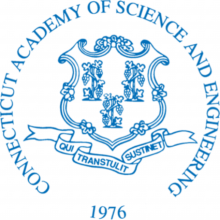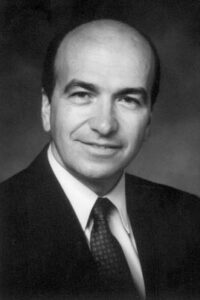Report Urges Legislative Action to Reduce Potential Health Risks
HARTFORD, CT — A new study concludes that poor indoor air quality in some Connecticut schools can pose a potentially significant health risk to students and staff. The report found that many activities in schools release a variety of air contaminants that degrade indoor air quality. However, the most frequent indoor air quality problems are related to the formation and release of microbiological agents such as mold spores and bacteria that thrive on moist indoor surfaces. The most frequent sources of this moisture intrusion are leaking roofs, cracked foundation slabs, or inadequate moisture control in heating, ventilation and air conditioning (HVAC) systems. The biologically active agents thus produced can produce serious allergic reactions and other symptoms in sensitive individuals. The effects of these and other indoor contaminants on school occupants are exacerbated by an inadequate supply of air provided by poorly designed and operated HVAC systems.
The report, entitled “Indoor Air Quality in Connecticut Schools,” recommends that the General Assembly establish a formal organization to coordinate the state’s efforts to address the problem of indoor air quality in schools. In addition, it recommends that the legislature give the state Department of Education the authority and funding to make indoor air quality improvements in schools, and to provide maintenance for both new and existing schools.
The Connecticut Academy of Science and Engineering (CASE) study was requested by the Environment Committee of the Connecticut General Assembly and was conducted by a study committee, each member of which had expertise in one or more aspects of indoor air quality and its health effects. The Committee included members of CASE and representatives of the University of Connecticut Health Center; the Yale University School of Medicine; the state Departments of Education, Public Health, and Labor; and the U.S. Environmental Protection Agency.
Among the report’s findings:
➢ Poor indoor air quality can usually be classified in terms of two types of conditions: Sick Building Syndrome and/or Building Related Illness. The former condition causes a range of symptoms such as eye, nose, and throat irritation, headaches, and feelings of lethargy. These symptoms usually do not have any lasting effect and tend to exist only while the affected individuals are in the contaminated school. However, this syndrome can degrade the whole teaching/learning experience. The latter condition, on the other hand, generally results from exposure to one or more infectious, toxic, or immunologic agents that can pose chronic, even lifethreatening disease in those with serious immunologic diseases such as asthma.
➢ There are no legally enforceable standards for indoor air quality, although there are engineering standards available that specify the quantities of fresh air ventilation necessary for good indoor air quality. However, cost constraints in school districts often preclude the application of these standards.
➢ In Connecticut, there is no designated or funded “Indoor Air Quality Program” in any of the state agencies.
➢ A report by the US General Services Administration on the condition of schools nationwide indicates that in Connecticut, 68 percent of schools reported indoor environmental problems.
➢ Schools built with poorly designed and maintained flat roofs, and those built on concrete slabs are particularly susceptible to moisture intrusion. This set of conditions, together with poorly designed, operated and maintained HVAC systems, accounts for most of the reported indoor air quality problems in Connecticut schools.
➢ Modular portable classrooms present a unique set of indoor air quality problems, largely because of the inadequate HVAC systems incorporated in such units. Renovation projects con ducted while school is in session also can result in exposure to indoor air pollutants.
➢ Various materials used indoors such as carpeting, carpet adhesives, and synthetic materials that emit odorous and irritating volatile organic vapors can further degrade indoor air quality.
➢ Existing Connecticut laws permit state grant reimbursement only for code corrections, new construction, or for new features added to existing facilities. Costs for the repair and maintenance of existing facilities such as HVAC systems are not eligible for reimbursement.
➢ Other states have implemented formal programs with enforcement powers to control indoor air quality problems in schools. Such programs could be models for Connecticut.
➢ The most important direct cause of poor indoor air quality is inadequate fresh air ventilation, regardless of other contributing factors.
The CASE study recommends that a formal body be established to coordinate all activities related to indoor air quality in Connecticut schools. This body should be responsible for developing guidelines, management practices, and/or regulations for maintaining acceptable indoor air quality in schools; establishing guidelines and standards for new construction and renovations that minimize impact on indoor air quality; providing training to those involved in indoor air quality programs in the schools; requiring schools and districts to establish indoor air quality management plans and operational manuals; and developing a system to assess the indoor air quality in schools, including facility inspections.
The Connecticut Academy of Science and Engineering was chartered by the General Assembly in 1976 to provide expert guidance on science and technology to the people and to the state of Connecticut, and to promote the application of science and technology to human welfare and economic well being. For more information about the Academy, please see www.ctcase.org.
News Release
April 28, 2025


